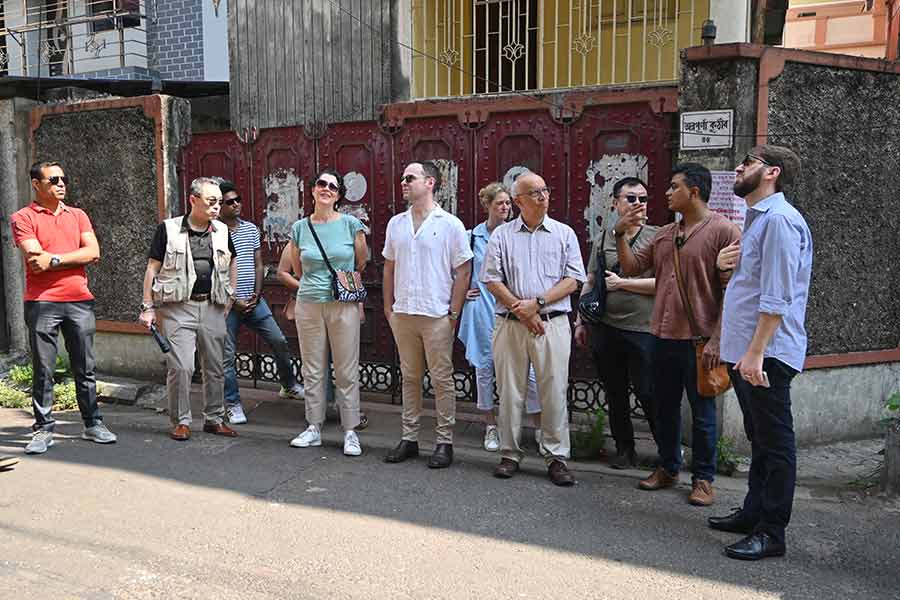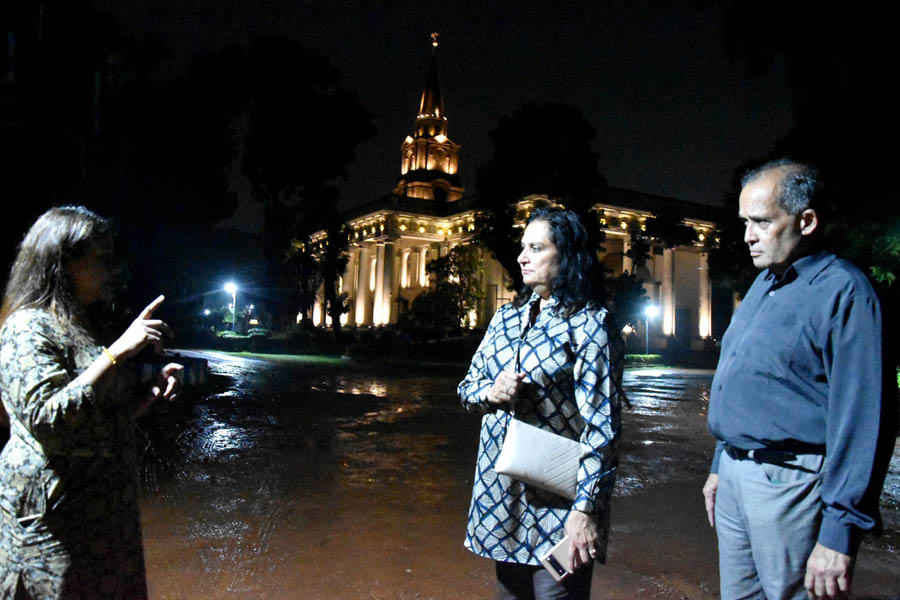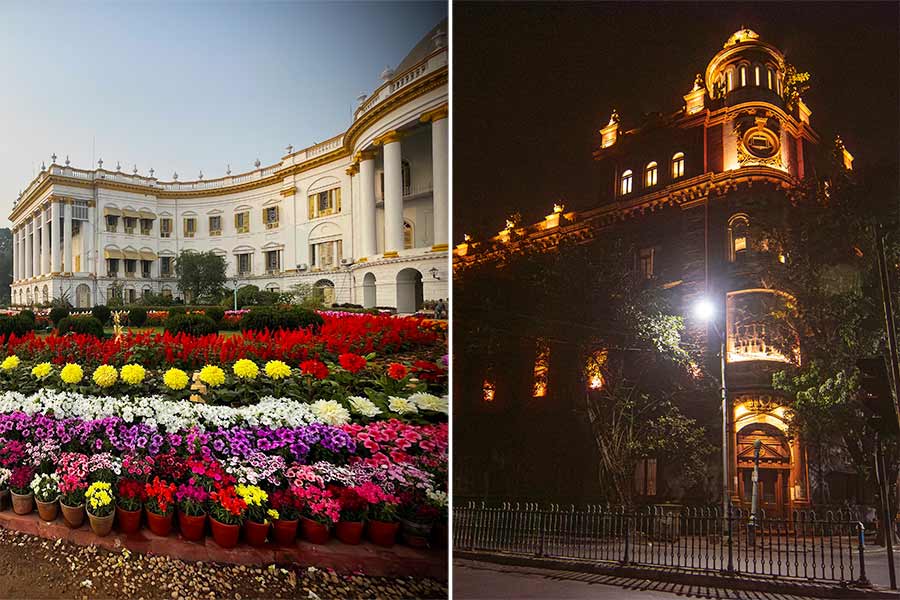A warm Saturday morning saw the narrow lanes of north Kolkata come alive with a curious blend of history and diplomacy. Iftekhar Ahsan, of Calcutta Walks, brought together representatives from multiple countries with a shared purpose — to explore how heritage can become the heart of Kolkata’s cultural and tourism revival. Titled ‘The Star Still Shines’, the walk was a starting point for stimulating conversations around how the city could redefine its destiny.
The idea for this gathering came from Miguel Diaz, who, along with his wife, Kathy Giles-Diaz, moved to the city last year, when she took over as the Consul General of the US in Kolkata. “For the past few months, Miguel has wanted to bring together people to initiate lasting change in the city — through the lens of culture, architecture, and tourism,” said Ahsan.
“From being one of the top cities in Asia to falling into neglect, Kolkata needs a push. Diplomats, government bodies and small businesses like us all want the same thing, this city’s resurgence. This walk was a small step in this direction.”
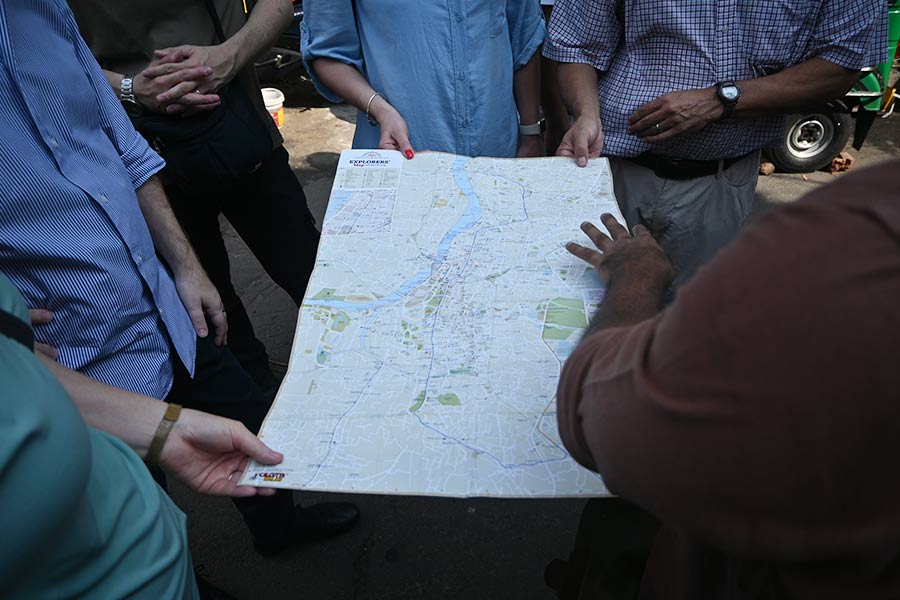
The walk took place in the Girish Park and Sovabazar neighbourhoods of north Kolkata, once named ‘Black Town’ by the British
The walk examined areas around Sovabazar and Girish Park, which were once dismissed by the British as the ‘Black Town’, but went on to host some of the city’s most stunning houses. Despite being denied basic civic amenities like sewage and street lighting, the Black Town was home to some of Bengal’s brightest minds, who wrote to the municipality and demanded change. In the process, it gradually became a melting pot for not just Bengali, but elements of Greco-Roman, Italian and French architecture, along with some Art Deco.
The walk halted at several landmarks: the house where Mirza Ghalib stayed during his Kolkata sojourn, the Simla House once occupied by WC Bonnerjee (the first president of the Indian National Congress), the iconic Girish Chandra Dey & Nakur Chandra Nandy sweet shop, and temples exemplifying Bengal’s traditional aat-chala style. The streets bore stories of forgotten grandeur, but also potential.
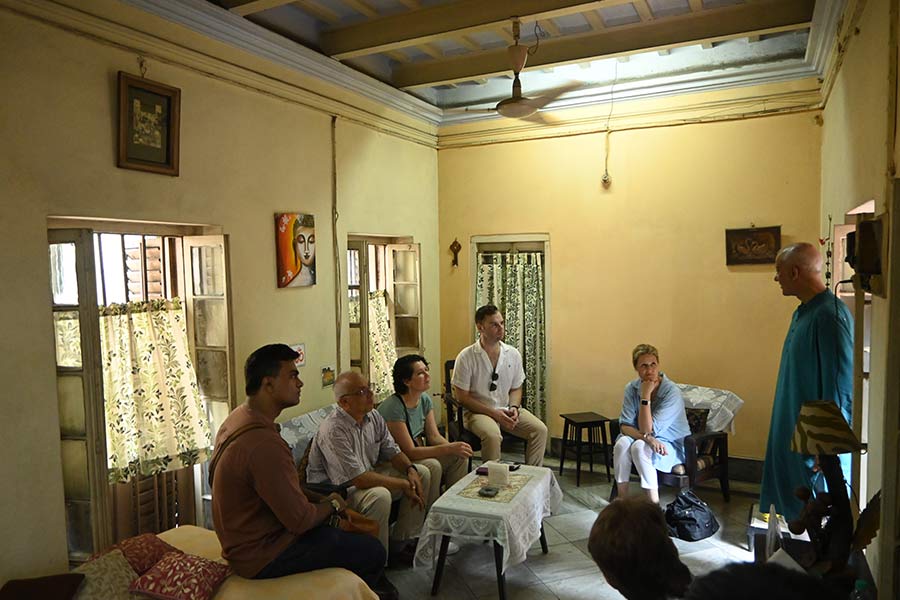
A recurring theme was ‘how to’ and ‘how not to’ restore heritage structures, culminating with an adda at the beautiful Mitra Bari
The final stop was inside the spacious home of Mitra Bari, where the patriarch of the family, Uday Mitra, enlightened the diplomats about the reality of restoring these houses. “Given the materials used, the cost of maintenance is extremely high. The younger generation doesn’t want to take on the responsibility of these homes, which has contributed to their decay,” he said.
"There’s such a wide range of things to restore here. It’s not impossible — but it needs to be sustainable and adaptable in a modern context,” remarked Italian Consul General in Kolkata, Riccardo Dalla Costa.
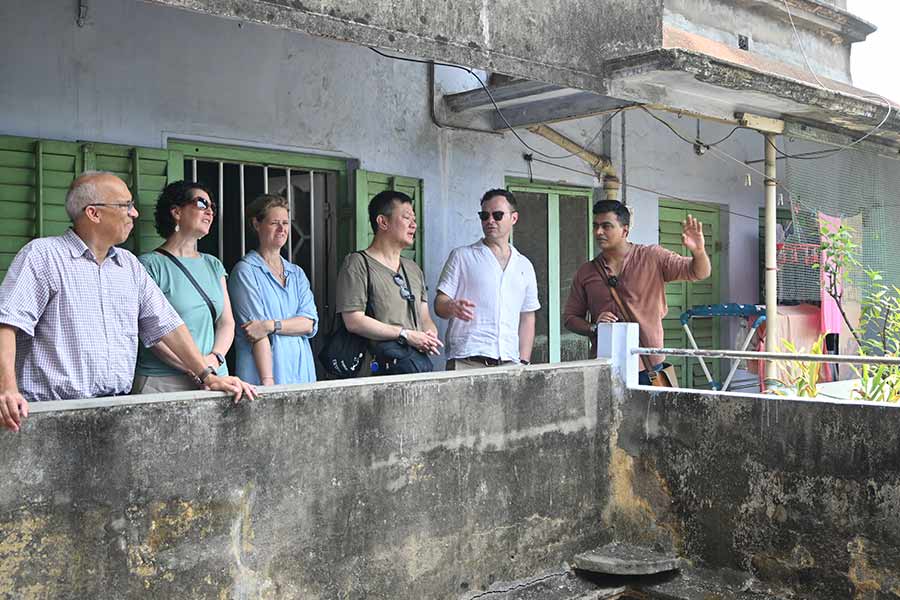
Ahsan stressed how successful neighbourhoods preserved a sense of community and were living, breathing ecosystems
Ahsan took the example of journalist Jane Jacobs’s book, The Death and Life of Great American Cities, where she highlighted how successful neighbourhoods preserved a sense of community and were living, breathing ecosystems. “There is a lot of talk about the dilapidated buildings in north Kolkata. However, we mustn’t aspire to steamroll and modernise such a lively neighbourhood, but reinvent its existing vibrance.”
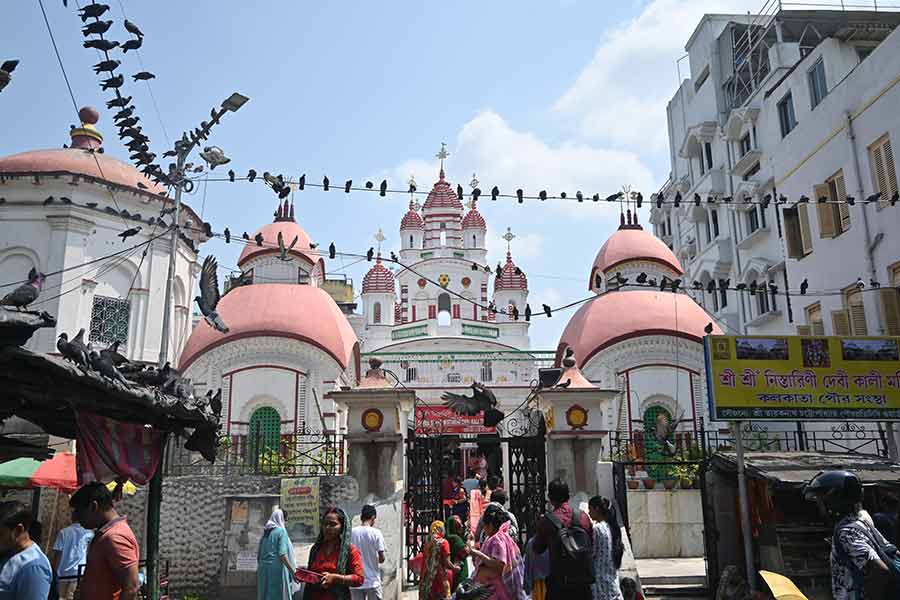
The Sri Sri Nistarini Devi Kali Mandir proved to be an effective example of maintaining the ethos of a heritage structure
The Australian Consul General in Kolkata, Hugh Boylan, echoed this sentiment through the lens of tourism, reflecting on how there was a growing demand to experience the mysterious ‘insides’ of heritage homes. “When I first came to Kolkata as a backpacker, tourists had to choose between basement lodges or five-star hotels. Today, I can see a huge interest in restored heritage homes that are affordable.”
Ahsan culminated the walk with a breakfast and adda at Calcutta Bungalow, which was a heritage home that he painstakingly converted into a boutique hotel. “As families have expanded over time, it has become even more challenging to pull off something like this. For Calcutta Bungalow, I needed clearance signatures from eight different people, including a family member in Germany!”
ASHIDA Katsunori, acting Consul General of Japan, was awed by the balconies, documenting everything on his GoPro for his YouTube channel. Miguel Diaz admired the craftsmanship in creating tables with antique kharkharis and restoring Burma-teak chairs. “This fall, I want to have a word with prominent investors about the potential of investing in Kolkata. This city deserves to regain its glory,” he said.
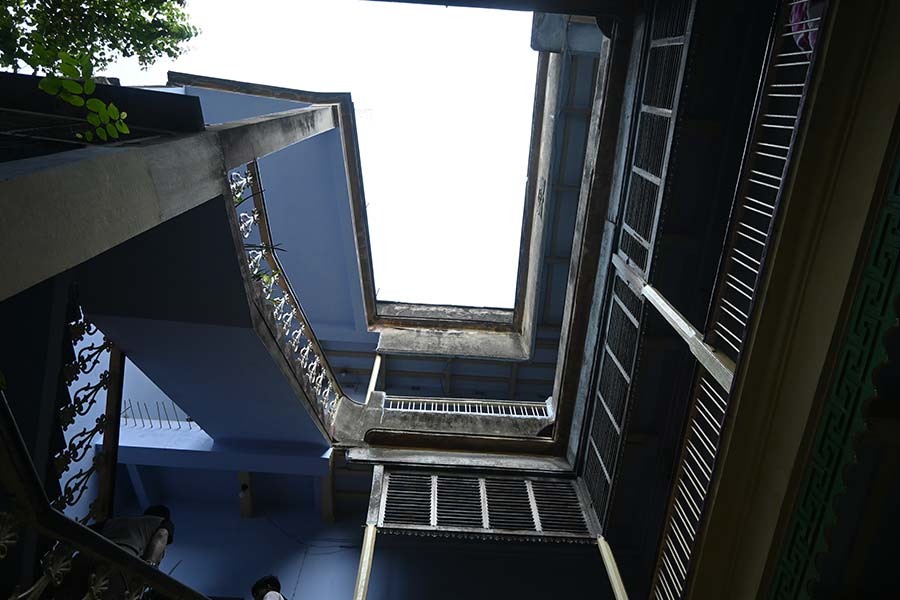
There was growing consensus that in order for Kolkata to retain its lost glory, restoration of its heritage architecture would have to play a key role
Over breakfast, the group discussed how similar models could be replicated across the city. Avantika Jalan, who pioneered one of the city’s most popular restoration initiatives, The Red Bari, weighed in, “It’s about giving credit and focus to what the city already has. A lot of times, people from outside see that more clearly than residents. Sometimes it takes an objective lens to capitalise on what’s already here. I’m sure that these global leaders will bring a great deal of nuance to this conversation.”
As the diplomats dispersed and the lanes of Sovabazar returned to their usual rhythm, a faint glimmer of possibility lingered. In a city where walls crumble faster than policies can change, one walk won’t save a city. But it can start a conversation. And often, that’s how change begins.
